The countries on the Mediterranean Sea are some of the most beautiful in the world; they’re home to warm climates, bountiful seafood, and breathtaking islands. While each of these countries has its unique identity, they are also bound by their connection to the Mediterranean.
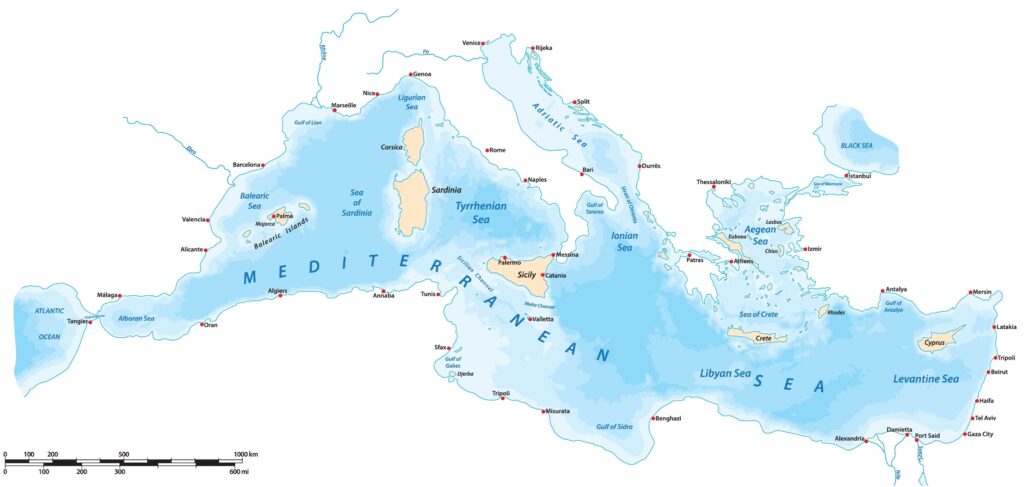
There are thousands of islands in the Mediterranean, and they come in all shapes and sizes, from tiny, uninhabited landscapes to sprawling hubs of international activity.
In this post, we’ll look at a detailed Mediterranean Islands Map before exploring 30 of the largest and most beautiful islands in the Mediterranean.
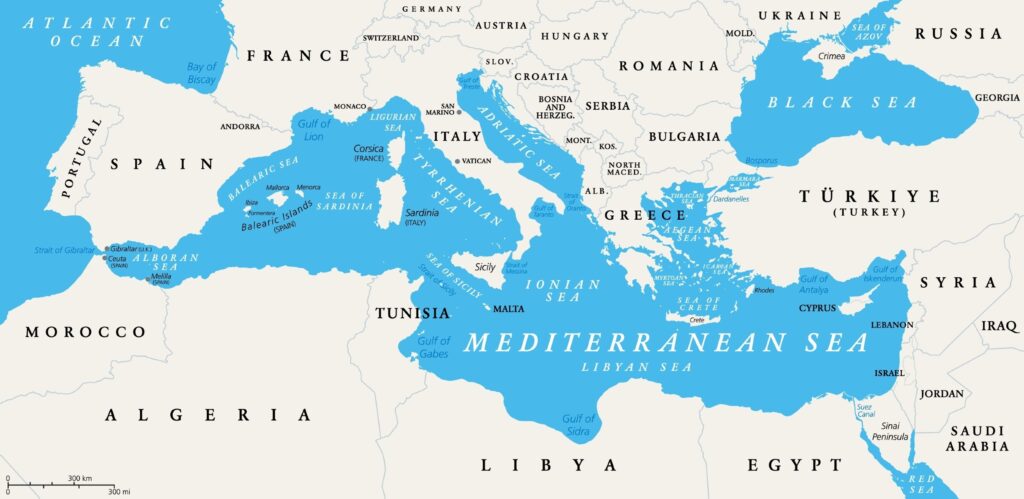
Popular Mediterranean Islands Ranked by Size:
| Rank | Island | Country | Size (sq km) |
|---|---|---|---|
| 1 | Sicily | Italy | 25,711 |
| 2 | Sardinia | Italy | 24,090 |
| 3 | Cyprus | Cyprus | 9,251 |
| 4 | Corsica | France | 8,680 |
| 5 | Crete | Greece | 8,336 |
| 6 | Euboea | Greece | 3,684 |
| 7 | Mallorca | Spain | 3,640 |
| 8 | Lesbos | Greece | 1,630 |
| 9 | Rhodes | Greece | 1,401 |
| 10 | Chios | Greece | 842 |
| 11 | Kefalonia | Greece | 781 |
| 12 | Corfu | Greece | 593 |
| 13 | Ibiza | Spain | 571 |
| 14 | Samos | Greece | 477 |
| 15 | Naxos | Greece | 429 |
| 16 | Zakynthos | Greece | 406 |
| 17 | Thasos | Greece | 380 |
| 18 | Andros | Greece | 380 |
| 19 | Lefkada | Greece | 356 |
| 20 | Malta | Malta | 316 |
| 21 | Karpathos | Greece | 301 |
| 22 | Kos | Greece | 290 |
| 23 | Kythira | Greece | 279 |
| 24 | Elba | Italy | 224 |
| 25 | Paros | Greece | 196 |
| 26 | Aegina | Greece | 87 |
| 27 | Formentera | Spain | 83 |
| 28 | Ischia | Italy | 46 |
| 29 | Lampedusa | Italy | 20.2 |
| 30 | Capri | Italy | 10.4 |
The above islands represent some of the most popular large islands in the Mediterranean and are not an exhaustive list of the 30 largest islands in the region.
Most Popular & Beautiful Mediterranean Islands
Sicily, Italy
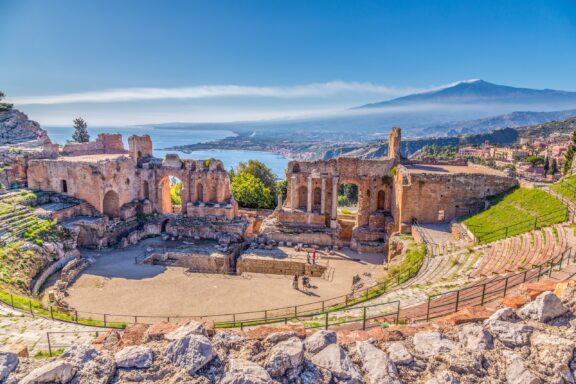
Sicily, the largest island in the Mediterranean, is defined by an impressive mosaic of cultures, history, and gastronomy. Dominated by the majestic Mount Etna, Europe’s tallest active volcano, the island offers a unique landscape that blends rugged coastlines with rolling hills.
Its rich history is evident in diverse architectural styles, from Greek temples in Agrigento to the Arab-Norman influences in Palermo. Sicilian cuisine, renowned worldwide, features fresh seafood, sun-ripened fruits, and iconic dishes like arancini.
The island’s vibrant markets and bustling streets mirror its complex past and dynamic present, and its beaches and warm weather attract tourists from all over the world. Cruises, volcano hikes, and food tours are just some of what Sicily has to offer its visitors.
Sardinia, Italy
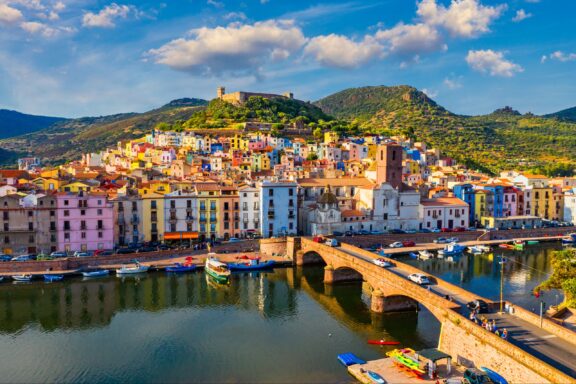
Sardinia is the second-largest Mediterranean island, renowned for its diverse landscapes and cultural heritage. The rugged terrain is complemented by pristine white-sand beaches like those found in Costa Smeralda, making it a favorite destination of beachgoers.
Inland, dense forests and mountains attract hikers, while ancient nuragic complexes offer a glimpse into the island’s prehistoric past. Sardinia’s culture is vivid in its small towns, where traditions are preserved, and the pace of life remains unhurried.
Local cuisine is a highlight, with specialties such as pecorino cheese and Cannonau wine, reflecting the island’s rich gastronomic culture.
Cyprus
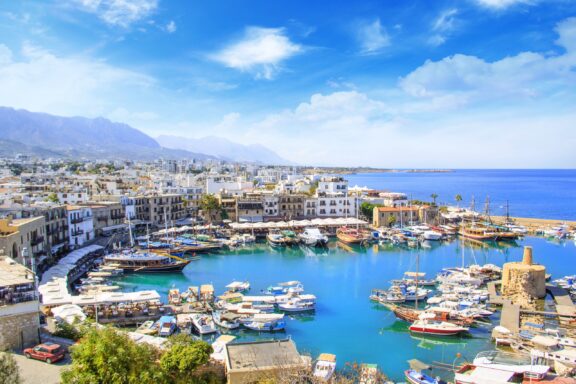
Cyprus, acclaimed for its historical significance and natural vistas, is a prominent Mediterranean destination. As the third-largest island in the Mediterranean, it boasts a landscape that ranges from sandy shores to forest-covered mountains. The island is partitioned into Greek and Turkish sectors, each with its own unique cultural identity and traditions.
The coastline is dotted with resorts and ruins side by side, highlighting a blend of leisure and legacy. Inland, the Troodos Mountains offer trails for adventurous spirits. Cypriot cuisine, with its Greek and Middle Eastern influences, features dishes like halloumi cheese and meze platters.
Corsica, France
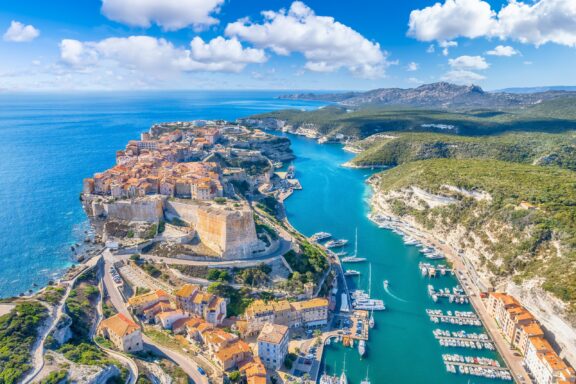
Corsica, dubbed the “Island of Beauty,” presents a landscape of contrasts in the Mediterranean. Dramatic mountains meet the sea, offering dramatic vistas that challenge hikers and attract nature lovers. Its terrain varies from precipitous cliffs to dense forests, providing a diverse range of outdoor activities.
Historically rich, Corsica is Napoleon Bonaparte’s birthplace, now home to the National Museum of the Bonaparte Residence. The local cuisine is a testament to its cultural fusion, with specialties such as cured meats, Brocciu cheese, and chestnut-flour delicacies.
With a variety of landscapes and cultural offerings, Corsica is a destination that appeals to adventurers and food enthusiasts alike.
Ibiza, Spain
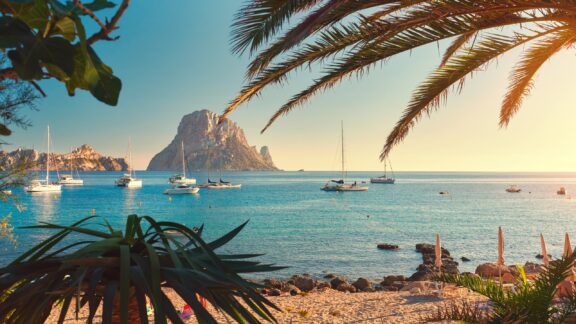
Ibiza, Spain, is often synonymous with its world-renowned nightlife and electronic music scene, but there’s much more to this Mediterranean island. Beyond the vibrant party atmosphere, Ibiza is home to quiet villages, yoga retreats, and beautiful beaches that offer tranquility and rest.
The island also boasts a rich history, with UNESCO World Heritage sites like Dalt Vila, the high town, which provides a window into its past through well-preserved architecture. The surrounding waters are clear and inviting, ideal for snorkeling and sailing.
Ibiza’s local cuisine reflects its maritime heritage, with fresh seafood being a staple on menus.
Mykonos, Greece
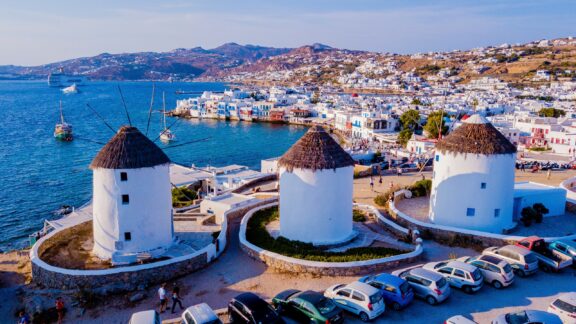
Mykonos, Greece, is revered for its cosmopolitan flair and iconic windmills dotting the hilltops, a vestige of its past. The island is a tapestry of whitewashed buildings, narrow winding streets, and pristine beaches that draw sun-seekers and socialites alike.
The waterfront is a theatrical display of luxury yachts and traditional fishing boats, reflecting the island’s blend of glamour and time-honored simplicity. Mykonos is also a culinary hotspot, with a selection of restaurants serving both authentic Greek dishes and international cuisine.
Historically significant is the island’s proximity to Delos, the mythological birthplace of Apollo and an important archaeological site.
Rhodes, Greece
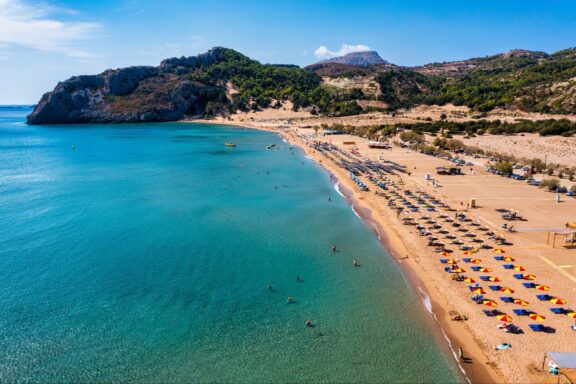
Rhodes, Greece, stands out for its varied history, from ancient ruins to medieval architecture. As one of the sunniest Greek islands, it combines extensive beaches with an array of historical sites, like the Acropolis of Lindos and the grand Palace of the Grand Master in Rhodes City.
The island’s old town is encircled by an impressive medieval wall, a UNESCO World Heritage site that transports visitors back to the era of the Knights of Saint John. Rhodes is also known for its lush interior, filled with olive groves and citrus trees.
Culinary enthusiasts can enjoy traditional Greek cuisine, with local specialties such as pitaroudia and melekouni.
Santorini, Greece
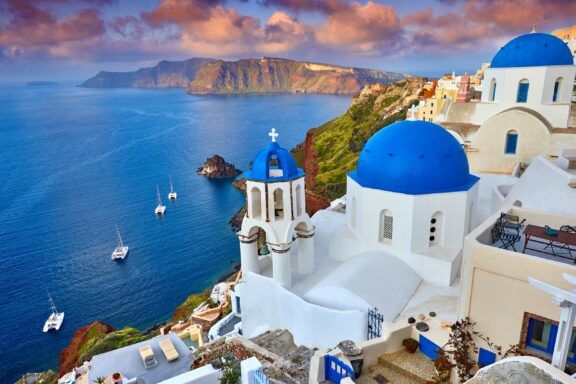
Santorini, Greece, is famed for its dramatic views, stunning sunsets, and the white, cliff-top villages of Fira and Oia. This volcanic island offers a dramatic landscape with its caldera edge and black sand beaches, such as Kamari and Perissa, which are unique to the island’s geological history.
Visitors often explore the ancient ruins of Akrotiri, which provide insight into the island’s advanced Minoan civilization. The local vineyards, benefiting from the volcanic soil, produce distinctive wines, notably the Assyrtiko variety.
Santorini’s cuisine is noted for using fresh local produce, including cherry tomatoes and white eggplants, to create delicious dishes that are as memorable as the island’s panoramic vistas.
Malta
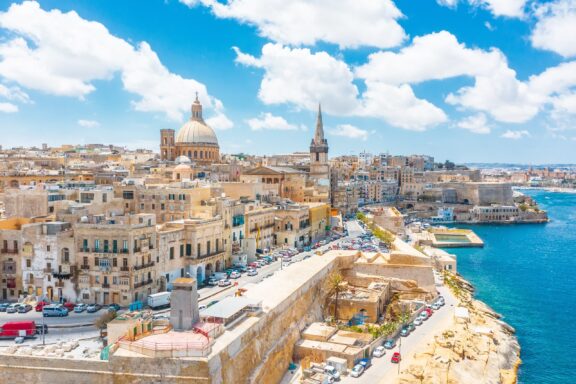
Malta, an archipelago in the central Mediterranean, is steeped in history spanning several millennia. This island nation is known for its historic sites related to a succession of rulers including the Romans, Moors, Knights of Saint John, French, and British. The capital of Malta is Valletta, a UNESCO World Heritage site that is famed for museums, palaces, and grand churches.
Malta’s prehistoric temples, such as Ħaġar Qim and Mnajdra, are among the oldest free-standing structures in the world. The island’s rugged landscape features rocky coves and stunning cliffs, offering picturesque views and opportunities for outdoor activities.
Majorca, Spain
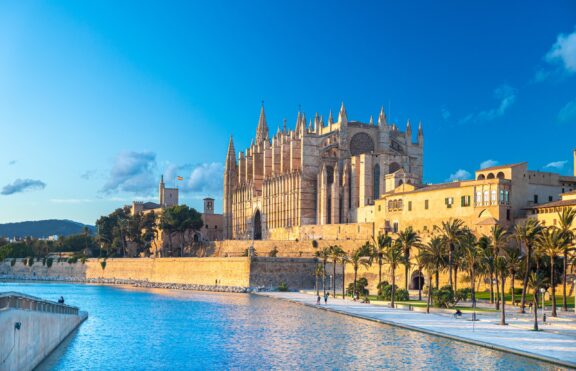
Majorca, the largest island in the Balearic archipelago, is known for its diverse landscapes, from the stunning Serra de Tramuntana mountain range to the crystal-clear waters of its numerous beaches.
Palma, the capital, is rich in history, highlighted by the iconic La Seu cathedral, a Gothic landmark overlooking the Bay of Palma.
The island is a haven for outdoor enthusiasts, offering hiking, cycling, and water sports. Majorca’s cultural heritage is reflected in its traditional stone-built villages like Valldemossa and the historic train ride to Sóller.
The lively festivals and markets in Majorca offer a glimpse into the vibrant local life and traditions.
Menorca, Spain
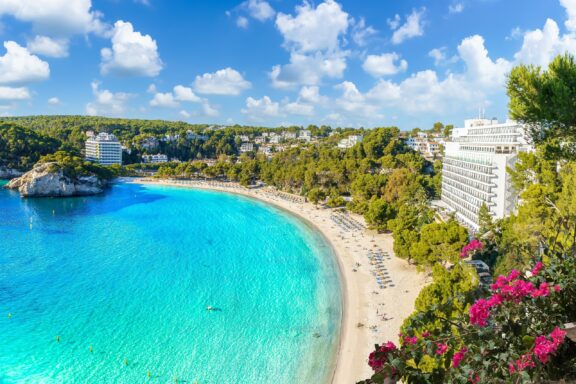
Menorca, the quieter sibling of Majorca in the Balearic Islands, is renowned for its unspoiled natural beauty and serene beaches like Cala Macarella and Cala Turqueta. The island is a UNESCO Biosphere Reserve, reflecting its commitment to preserving the environment.
Menorca’s capital, Mahón, is famous for its deep natural harbor, one of the largest in the world, and charming Georgian architecture. The island’s slower pace of life is evident in its tranquil villages and gentle coastal walks.
Menorca also offers a range of outdoor activities, including kayaking in its crystal-clear waters and exploring the Camí de Cavalls, a historic path encircling the island.
Capri, Italy
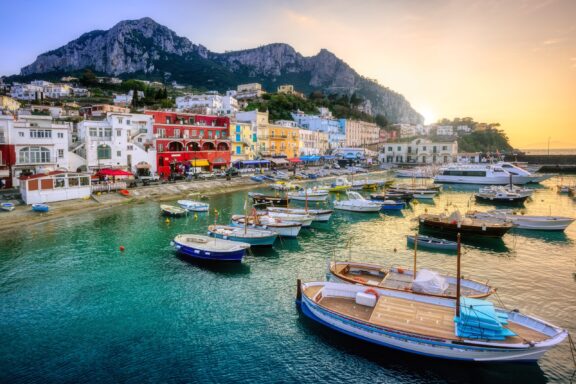
Capri, Italy, nestled in the Tyrrhenian Sea, is a small yet captivating island known for its rugged landscape, upscale resorts, and a plethora of hidden coves and grottoes. The island’s most famous natural site is the Blue Grotto, a dark cavern where the sea glows electric blue, thanks to the sunlight passing through an underwater cave.
Capri Town and Anacapri, the island’s two main towns, are filled with narrow streets, luxury boutiques, and charming cafes. The historic Villa San Michele in Anacapri offers panoramic views of the island and sea. Capri has been a resort since the time of the Roman Republic, with ruins of Emperor Tiberius’ villas still visible.
Ischia, Italy
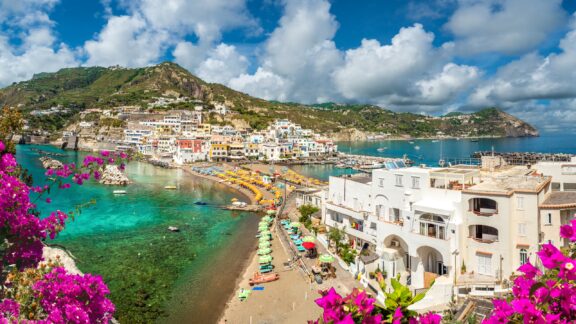
Ischia, located in the Gulf of Naples, Italy, is often celebrated for its thermal springs and volcanic mud, with numerous spa towns like Ischia Porto and Sant’Angelo offering natural hot springs and wellness treatments. The island’s diverse landscape features lush gardens, vineyards, and woodlands, alongside picturesque beaches and clear waters.
Castello Aragonese, a medieval castle connected to Ischia by a causeway, stands as a prominent historical landmark offering stunning views and a glimpse into the island’s past. La Mortella Gardens, created by Lady Susan Walton, wife of English composer William Walton, is a botanical wonder that showcases a variety of Mediterranean plant life.
Elba, Italy
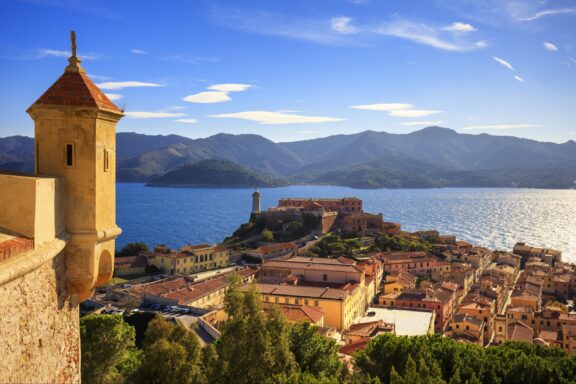
Elba, Italy, the third-largest Italian island after Sicily and Sardinia, is most famous as the site of Napoleon’s exile in 1814-1815. The island offers a blend of beautiful beaches, such as Spiaggia di Sansone, and rugged mountainous terrain, ideal for hiking and biking.
Napoleon’s influence remains visible, particularly in the Palazzina dei Mulini, his former residence in Portoferraio, the island’s main town. Elba’s rich mining history is showcased in the Mineral Park of Elba Island, with tours of the old mines.
Diving enthusiasts are drawn to Elba for its clear waters and vibrant marine life, making it a popular spot for underwater exploration.
Corfu, Greece
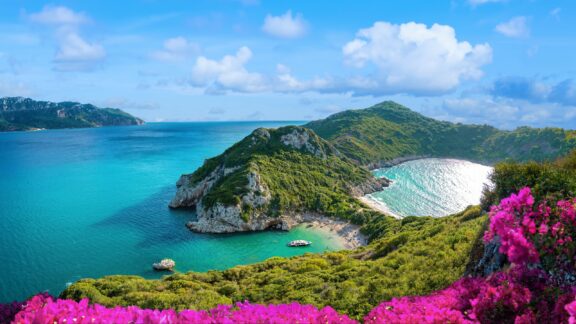
Corfu, Greece, located in the Ionian Sea, is known for its lush greenery and rich cultural heritage, influenced by various civilizations including the Venetians, French, and British. The Old Town of Corfu, a UNESCO World Heritage site, is a maze of narrow streets flanked by Venetian buildings and small squares.
The island is dotted with fortresses like the Old Fortress and the New Fortress, which offer historical insights and panoramic views. Corfu’s beaches, such as Paleokastritsa and Glyfada, are surrounded by olive groves and cypress trees, providing scenic spots for relaxation and water activities.
Kos, Greece
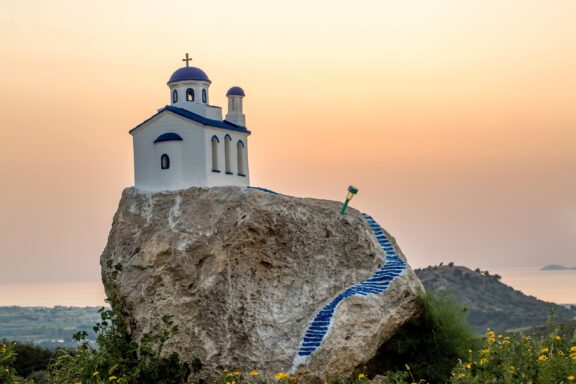
Kos, situated in the Dodecanese chain in the Aegean Sea, is celebrated for its abundant sandy beaches and rich ancient history. The island is the birthplace of Hippocrates, the father of medicine, and his legacy can be explored at the Asklepieion, an ancient healing temple.
Kos Town, the island’s capital, blends historical landmarks with lively modernity. The 14th-century Castle of the Knights overlooks the harbor and is a testament to the island’s medieval past. Kos is also known for its bicycle-friendly roads, making it easy to explore the island’s diverse landscapes.
Beach lovers are drawn to spots like Tigaki and Kardamena for their clear waters and relaxing atmosphere.
Zakynthos, Greece
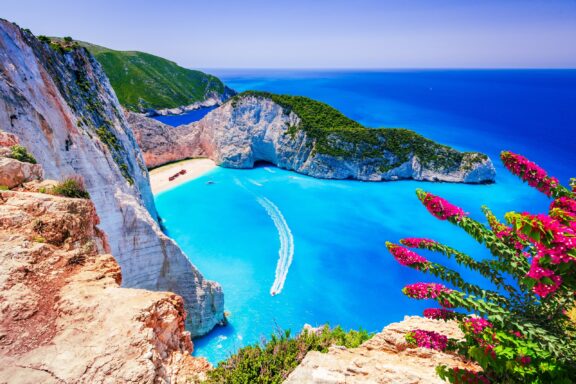
Zakynthos, also known as Zante, in the Ionian Sea, is famous for its stunning beaches, particularly Navagio Beach, also known as Shipwreck Beach, renowned for its crystal-clear waters and the picturesque shipwreck lying in the white sandy cove.
The island is also home to the endangered Caretta Caretta sea turtles, which nest on its shores, particularly on the protected beaches of Laganas Bay.
The Blue Caves, another natural attraction, are a series of geological formations along the coast, creating a unique swimming and snorkeling experience. Zakynthos Town, the island’s capital, was rebuilt in traditional Venetian style after the 1953 earthquake, offering a charming blend of history and modern amenities.
Lesbos, Greece
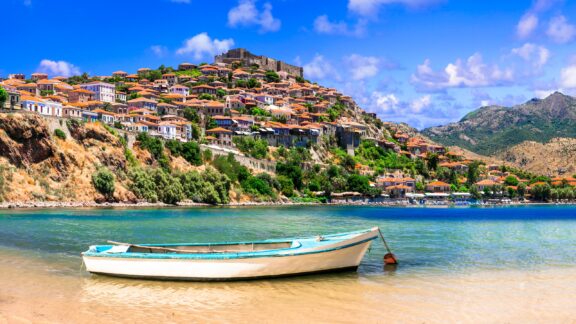
Lesbos, a Greek island in the northeastern Aegean Sea, is known for its rich cultural heritage, petrified forest, and production of high-quality olive oil and ouzo, a traditional Greek anise-flavored liqueur. The island’s capital, Mytilene, is home to a mix of classical and Ottoman architecture, including the impressive Mytilene Castle.
Lesbos is also celebrated for its natural hot springs, like those in Eftalou, which are believed to have therapeutic properties. The Petrified Forest of Lesbos, a UNESCO Global Geopark, is a unique geological phenomenon with its fossilized tree trunks.
Chios, Greece
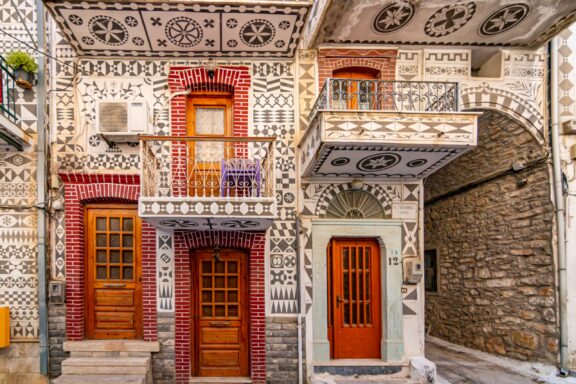
Chios, Greece, is distinctive for its medieval villages and mastic gum production, exclusive to the island. The village of Pyrgi is famous for its geometrically patterned facades, a style known as “xysta.” Another notable village, Mesta, is an excellent example of Byzantine fortress architecture.
The island’s rugged terrain is interspersed with serene beaches like Mavra Volia, known for its striking black pebbles. Chios also has a rich history, with Nea Moni, an 11th-century monastery, showcasing exquisite mosaics.
This lesser-known Greek island in the Mediterranean offers a blend of cultural uniqueness and natural beauty, appealing to those seeking a more authentic experience.
Lampedusa, Italy
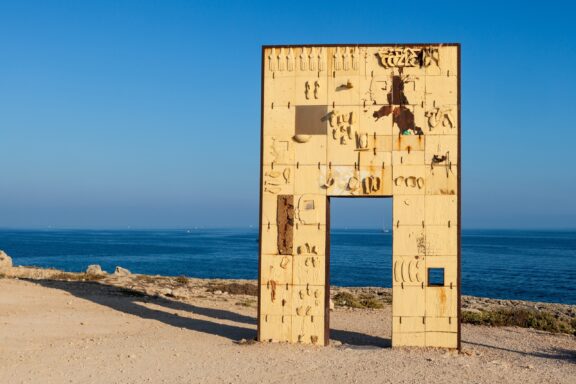
Lampedusa, Italy’s southernmost island, is part of the Pelagie archipelago. Known for its crystal-clear waters and pristine beaches, it’s a haven for beach lovers and wildlife enthusiasts. The most famous beach, Spiaggia dei Conigli, or Rabbit Beach, is often ranked among the world’s best for its unspoiled beauty and is a nesting site for loggerhead sea turtles.
Despite its small size, Lampedusa has a distinctive landscape of rocky cliffs and tranquil coves. The island’s laid-back atmosphere is perfect for those seeking relaxation away from bustling tourist spots.
Pantelleria, Italy
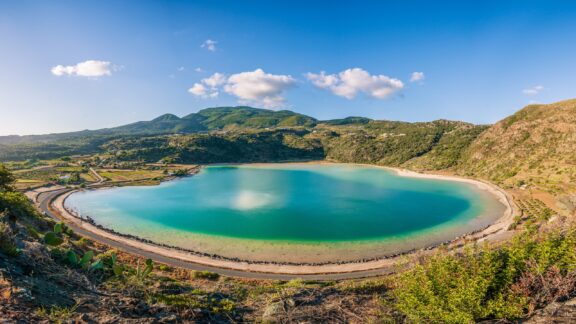
Pantelleria, an Italian island closer to the African coast than to Sicily, is known for its dramatic volcanic landscape, including the striking Montagna Grande and the mirror-like Lake Specchio di Venere, a natural lake formed in a volcanic crater. The island’s rugged coastline features rocky coves and hot springs, a testament to its volcanic origins.
Pantelleria is also celebrated for its unique “dammuso” architecture, traditional stone dwellings with thick walls and dome-shaped roofs, designed to keep cool in the heat. The island’s agriculture is characterized by caper bushes and the cultivation of zibibbo grapes, used to produce the sweet Passito di Pantelleria wine.
Formentera, Spain
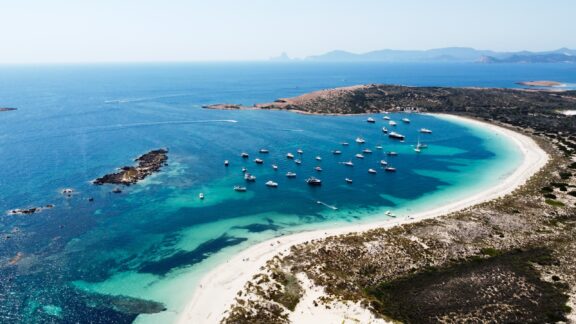
Formentera, the smallest of Spain’s Balearic Islands, is famed for its clear waters and long stretches of beach backed by dunes and pine trees. Notably less developed than its neighbor Ibiza, Formentera offers a more tranquil and unspoiled environment.
The island is a paradise for beachgoers, with Playa de Ses Illetes renowned for its shimmering turquoise waters and white sands.
Accessible only by boat from Ibiza, Formentera retains a sense of seclusion and simplicity. The island is also a popular destination for cycling and hiking, with a network of trails offering scenic views of the Mediterranean landscape.
Historical sites, like the megalithic stone structures of Ca Na Costa, provide insights into the island’s ancient past.
Aegina, Greece
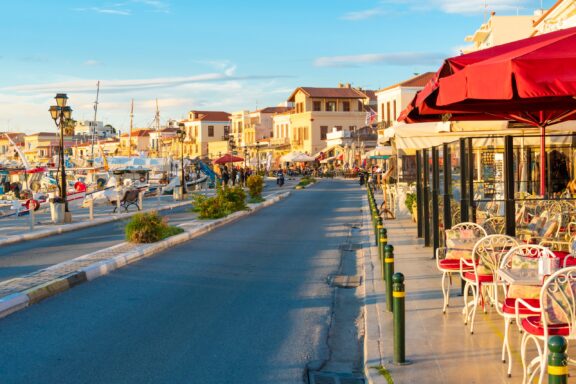
Aegina, a Saronic Gulf island close to Athens, is known for its rich history, picturesque landscapes, and the production of pistachios, considered some of the best in the world. The island’s most significant historical site is the Temple of Aphaia, a well-preserved ancient Greek temple that forms a sacred triangle with the Parthenon in Athens and the Temple of Poseidon at Sounion
Aegina Town, the charming main town, features neoclassical buildings and a bustling waterfront lined with cafes and shops. The island’s interior is dotted with small villages and olive groves, offering a glimpse into traditional Greek island life.
Beaches like Agia Marina, with its golden sands and clear waters, provide opportunities for relaxation and water sports. Aegina’s proximity to Athens makes it a popular destination for both tourists and Athenians seeking a quick escape to the islands.
Hydra, Greece
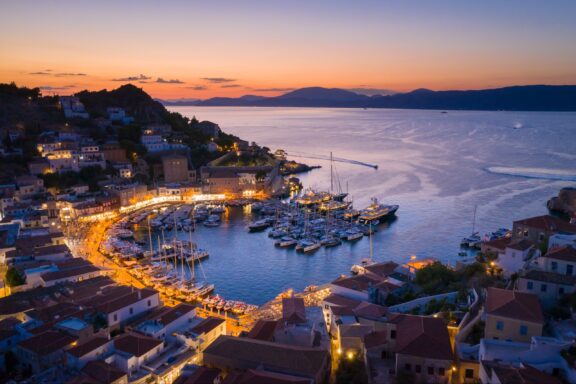
Hydra, one of the Saronic Islands of Greece, is notable for its well-preserved architecture, car-free streets, and status as a haven for artists. The island’s main town, also named Hydra, is characterized by stone mansions and narrow alleys and is built amphitheatrically around a port.
Transport on the island is traditionally by donkey, water taxi, or on foot, contributing to its tranquil atmosphere. Hydra has long been a retreat for poets, musicians, and artists, attracted by its rugged charm and inspiring landscapes.
The island’s coastline is dotted with secluded coves and clear waters, ideal for swimming and relaxation. Historic monasteries and museums, such as the Historical Archive Museum of Hydra, offer cultural insights.
Lefkada, Greece
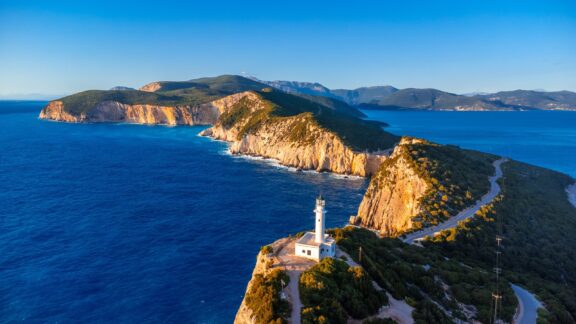
Lefkada, connected to the Greek mainland by a causeway, is known for its stunning beaches like Porto Katsiki and Egremni, characterized by their sheer cliffs and turquoise waters. The island is a blend of mountainous terrain and lush valleys, ideal for nature lovers and adventure seekers.
The capital, Lefkada Town, displays charming architecture and a network of canals, reminiscent of Venice. The island’s west coast offers some of the best windsurfing conditions in Europe, especially at beaches like Vassiliki.
Inland, traditional mountain villages like Karya and Agios Nikitas provide a glimpse into the island’s authentic culture. The east coast of Lefkada, with its calmer waters and picturesque harbors, is perfect for sailing and exploring the smaller, nearby islands.
Paros, Greece
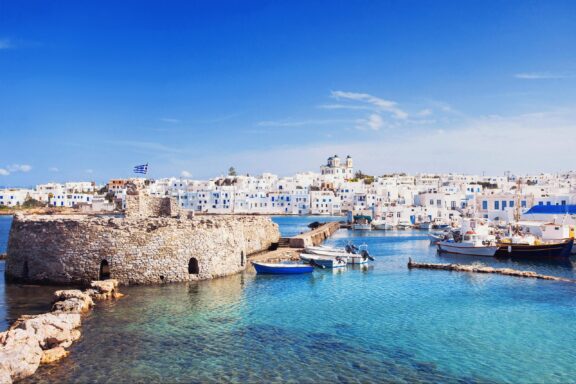
Paros, nestled in the heart of the Aegean Sea, is celebrated for its traditional villages, beautiful beaches, and vibrant nightlife. The island is characterized by its classic Cycladic architecture with white-washed houses and blue-domed churches, notably in the picturesque villages of Naoussa and Parikia, the capital.
Paros is also a hub for watersports, particularly windsurfing and kitesurfing, due to the strong winds in areas like Golden Beach. The island’s ancient quarries of Parian marble, famous since antiquity, were the source of classical sculptures like the Venus de Milo.
The Panagia Ekatontapiliani, or the Church of 100 Doors, in Parikia is a significant Byzantine church in Greece, attracting history enthusiasts. Paros offers a mix of leisure and adventure with its diverse landscapes, from serene bays to lively party spots.
Samothrace, Greece
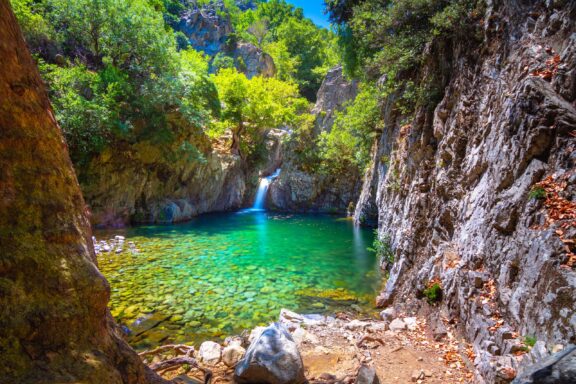
Samothrace, a lesser-known Greek island in the northern Aegean Sea, is celebrated for its rugged, mountainous terrain and rich ancient history. Dominated by Mount Saos, the island’s highest peak, Samothrace offers stunning natural landscapes, including waterfalls and natural pools, particularly in the Fonias River gorge.
The island is famed for the Sanctuary of the Great Gods, an ancient pilgrimage site that was the center of the mysterious Samothracian Mysteries, a series of ancient religious rites. This archaeological site adds a mystical allure to the island, attracting history buffs and cultural enthusiasts.
Samothrace’s coastline features secluded pebble beaches and clear waters, providing a serene setting for relaxation and swimming.
Naxos, Greece
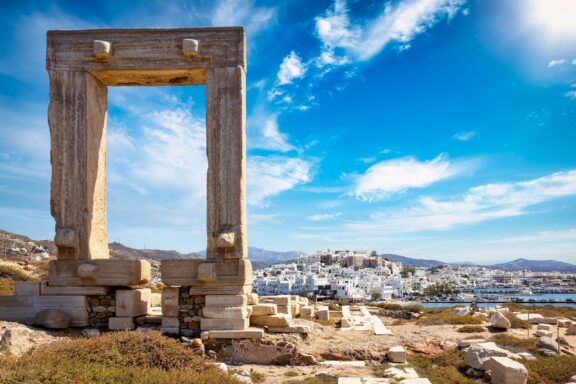
Naxos, the largest of the Cyclades islands in Greece, is known for its impressive mountainous landscapes, ancient ruins, and fertile valleys. The island’s landmark, the Portara, is a massive marble gateway standing on the islet of Palatia, which was once part of an unfinished temple of Apollo.
Naxos’ interior is dotted with traditional villages, Byzantine churches, and Venetian castles, offering a glimpse into its rich history. The villages of Halki and Apiranthos, for instance, are notable for their well-preserved architecture and charming streets.
The island’s beaches, like Agios Prokopios and Plaka, are renowned for their clear waters and long stretches of sand, appealing to both families and solo travelers.
Image Sources and Copyright Information
- Mediterranean Islands Map: © Rainer Lesniewski/Shutterstock
- Mediterranean Sea Map: © Peter Hermes Furian/Shutterstock
- Ancient Greek Theater Ruins in Taormina, Sicily with Mount Etna in the Background: © K. Roy Zerloch/Shutterstock
- Aerial View of the Colorful Village of Bosa by the River in Sardinia: © DaLiu/Shutterstock
- Scenic View of Kyrenia Harbor with Boats and Historical Castle in Cyprus: © MarinaDa/Shutterstock
- Aerial View of the Historic Coastal Town of Bonifacio on Corsica Island: © Serenity-H/Shutterstock
- Serene Sunset at Cala d’Hort Beach with Es Vedrà Island in the Background, Ibiza: © Alex Tihonovs/Shutterstock
- Sunset View of the Iconic Windmills in Mykonos, Greece: © No Tracers/Shutterstock
- Aerial View of Tsampika Beach with Golden Sand and Turquoise Waters in Rhodes: © DaLiu/Shutterstock
- Idyllic View of Fira Town with Iconic Blue Domes Overlooking the Aegean Sea in Santorini, Greece: © Zebra-Studio
- Aerial View of Valletta Skyline with the Basilica of Our Lady of Mount Carmel and St. Paul’s Pro-Cathedral, Malta: © aappp/Shutterstock
- Panoramic View of the Cathedral of Santa Maria of Palma in Mallorca, Spain: © proslgn/Shutterstock
- Panoramic View of Cala Galdana Beach with Turquoise Waters on Menorca Island: © Serenity-H/Shutterstock
- Sunset at Marina Grande Port on Capri Island with Moored Boats and Colorful Buildings: © Boris Stroujko/Shutterstock
- Colorful Coastal Village of Sant’Angelo on Ischia Island: © Serenity-H/Shutterstock
- Aerial View of Portoferraio with Lighthouse on Elba Island: © StevanZZ/Shutterstock
- Panoramic View of Porto Timoni Beach in Corfu, Greece, with Vibrant Blue Waters and Lush Greenery: © Nick Brundle Photography/Shutterstock
- Chapel on a Rock Overlooking the Sunset in Zia Village, Kos Island: © Esin Deniz/Shutterstock
- Aerial View of Navagio Beach with Shipwreck Against Turquoise Waters in Zakynthos, Greece: © ecstk22/Shutterstock
- Idyllic Coastal Town on Lesbos Island, Greece, with Traditional Architecture and Clear Blue Waters: © leoks/Shutterstock
- Traditional Decorated Alley in Pyrgi, Chios, Greece: © Kadagan/Shutterstock
- Sculpture of a Doorway with Artistic Reliefs Overlooking the Sea: © bepsy/Shutterstock
- Panoramic View of a Serene Volcanic Thermal Lake on Pantelleria Island: © Emilio messina/Shutterstock
- Aerial View of Crystal Clear Waters and Boats at Ses Illetes Beach in Formentera: © Alexandre.ROSA/Shutterstock
- Sunny Afternoon at a Bustling Seaside Promenade in Aegina, Greece: © Kirk Fisher/Shutterstock
- Twilight over Hydra Port in Greece with Illuminated Waterfront and Moored Yachts: © Georgios Tsichlis/Shutterstock
- Aerial View of a Lighthouse on Cape Ducato in Lefkada, Greece: © Unai Huizi Photography/Shutterstock
- Idyllic View of Naousa Village Harbor on Paros Island, Cyclades, Greece: © Kite_rin/Shutterstock
- Secluded Waterfall Oasis in a Lush Forest: © Georgios Tsichlis/Shutterstock
- Portara – The Iconic Ancient Gateway on Naxos Island, Greece: © Sven Hansche/Shutterstock